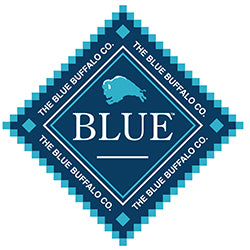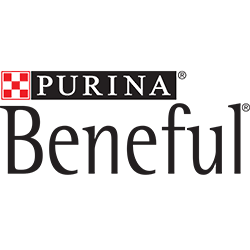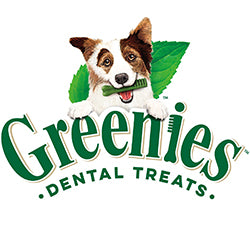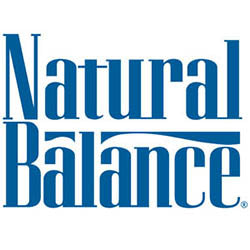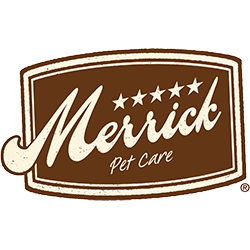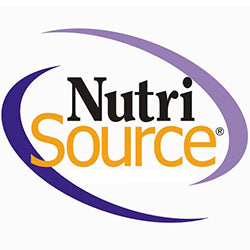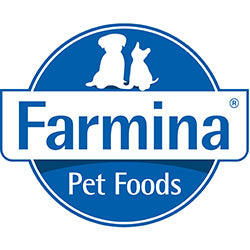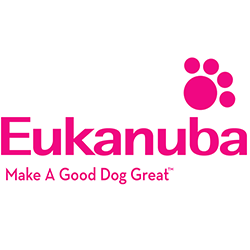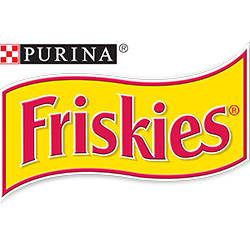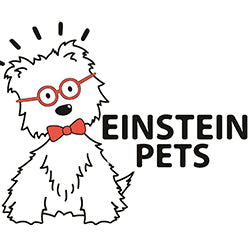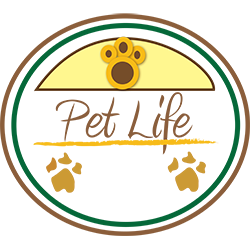
Best Dog Food To Keep Your Pup Happy And Healthy
Every food meant for dogs would be created equal in a perfect world. Instead, dog owners are confronted with a puzzling assortment of choices, all professing to be the greatest dog chow available. It may be challenging to go through all the options to select a nutritious dog food brand with the necessary ingredients, reasonable cost, and delicious taste.
Those who own a puppy should pay close attention to this topic. If you're considering puppy food, quality is of the utmost importance. When it comes to good nutrition, a dog's formative years are crucial, and providing your dog with the best food might certainly make things simpler down the road. In addition, provided you choose your dog food brands carefully, you may avoid some of the health issues that occur with a poor diet.
This post will go through the top markers to look out for when getting the best dog foods, including cost, ingredients, availability, and others.
What Characterizes "Good" Dog Food?
A large percentage of dog owners feed their pets wet or dry dog food. These processed meals contain the elements dogs require to be healthy, even if they aren't appealing. Commercial dog foods of high quality are strictly regulated and have been thoroughly tested by veterinarians.
Dogs, unlike cats, are not solely carnivores. Cereals, fruits, and vegetables can provide the nutrients they need, but meat makes up most of their diet. These non-meat meals aren't merely fillers; they are high in fiber and other essential nutrients. So, fruits, meat, grains, and vegetables are components of a decent dog meal. The best diets have high-quality versions of these nutrients that are suitable for your dog's digestion.
Best Dog Foods Available on The Market
Best For Puppies - Verus Fresh Meat Formula
Dogs' dietary requirements change throughout their lives. The nutritional demands of puppies differ from that of adult dogs, hence requiring more care. Most dog food brands have specifically created puppy diets for each stage of a dog's life, which makes narrowing down your options easier. A puppy and an adult dog have different nutritional needs. This is particularly true in the case of big breeds. A puppy diet customized for large breeds can help since their growth must be closely managed to avoid bone and joint issues. With these considerations, the fresh meat formula from Verus is the best bet for most puppies. But see your veterinarian if you're unsure which dog food is ideal for your dog's life stage.
Best Dry - Nature's Logic Dry Dog Food
Dry dog food has become readily accessible and the cheapest dog chows since it comprises about 10 percent water and 90 percent dry matter. It doesn't require cold storage, which is its principal advantage over wet dog food. It's much easier to store as a result of this. Ingredients such as meat and wheat are combined and cooked to make dry dog food. When you want an affordable but original and purely natural dog food that stores easily, look no further than Nature's Logic Original dry food.
Best Special Dietary Dog Food
Dogs, like people, suffer from allergies, dietary limitations, and sensitive stomachs. It might not be easy to provide for dogs having unique nutritional requirements. In case of any doubts, please consult your vet for recommendations on the dog food that would best benefit them, given their conditions. Our top pick for this category is the Moxie Gluten-free chicken freeze-dried dog prepared with an assortment of different high-quality ingredients to taste so palatable.
Best For Older Dogs - Grandma Lucy's 3 Bears
Senior dogs, mainly those aged seven and up, have different dietary requirements. Younger senior dogs may suffer from obesity, while older dogs may battle underweight, which explains the wide range, making the Grandma Lucy's 3 Bears the apparent option due to its well-proportioned ingredients.
Nevertheless, deciding on the finest senior dog food boils down to your dog's preference. Many senior dogs like wet food, while others may want their meal to be reheated to bring out the scents. Lastly, your vet can assist you in selecting the best dog food for an older dog.
Best Wet - Tiki Dog Whole Foods
Wet dog food, popularly called canned dog food, is an excellent substitute for dry dog food. Wet dog food is more appealing than dry dog food and can help increase the appetite of fussy eaters, though it's pricier. Many of the same components are found in wet dog food and dry dog food, although not in the same proportions. A classic example is the Tiki Dog Whole Foods variety pack. Just remove the lid to give your dog a treat.
Nutritional Values in Dog Food
Your dog's nutritional requirements should be easily met, provided you get the best dog food. Although the better part of commercially produced most dog foods contain the primary dietary needs, you can't discount the fact that every dog's body has a unique nutritional demand.
Throughout their lives, dogs require a variety of nutrients in varying amounts. Because a puppy's nutritional requirements differ from an adult dog's, it's a good idea to give your young dog a puppy formula. The Merck Veterinary Manual states the essential nutrients for dogs in the appropriate quantity according to age and weight. So, if you're confused about the changes in dietary requirements between pups and adults, this is the perfect material to reference. In addition, the dietary needs of large breed dogs and pups differ from those of small breed dogs to puppies.
Myths and Misinformation About Dog Food
There are many dog food misconceptions and disinformation surrounding even the most delicious dog treats on the internet. It's easy to filter through it if you follow one basic rule: double-check your sources. Many well-intentioned people make assertions regarding canine nutrition that aren't backed up by scientific research. While conducting your research, always verify if the advice is substantiated by a trustworthy source, such as a recent scientific study, veterinarian, or canine nutritionist. Furthermore, it isn't wrong to stay on alert. If you find something too promising to be true, better avoid it.
Grain-free or grain-containing dog food, pea-free dog food, and dog meals containing animal byproducts are all topics that consumers are curious about. Supposing your dog has been identified with a grain allergy, you can follow your veterinarian's advice and provide him with a grain-free diet. Grains are a good source of nutrition for most dogs. Animal byproducts of high quality are also nutrient-dense. Organ meats and guts, for example, are frequently higher in nutrition than the muscle meat humans consume. Hooves, hair, floor sweepings, digestive contents, and feces are not regulated byproducts. Feel free to share any worries regarding your dog's diet with your veterinarian, just as you would with any other pet-related question.
What to Look for on a Dog Food Label?
Checking the label is one way to tell if the dog food is any good. But it's trickier than it sounds since labels can be difficult to read owing to their nature and the inconveniences of transporting large bags containing dog chow from the vendor. Yet, as the Merck Veterinary Manual says, labels can be deceiving. The Food and Drug Administration (FDA) requires labels on different pet edibles like dog kibbles to outline eight vital facts, and every state may have different labeling requirements:
- Name of the product
- The product's net weight
- Manufacturer's name and address
- Assurance of analysis
- Ingredients' list
- Species of animals to be targeted (i.e., dog or cat)
- Nutritional adequacy statement
- Feeding recommendations
Product Name
Looking solely at the product name gives you a lot of information about the product's contents. For example, beef must account for at least 70% of the total product when the term "beef" is used. The words "beef dinner," "beef entrée," and "beef platter," on the other hand, only need beef to account for at least 10% of the total product. "With beef" simply means the amount of beef in the product is enough to flavor it, and "beef flavor" simply means that there is enough beef in it to flavor it (less than 3 percent). Other named ingredients, such as "chicken," also work the same way.
Ingredients
The ingredients' quality or origins is often left out of the dog food labels. Also, some producers break up the ingredients to ensure the allocation is more uniform. For instance, different varieties of corn can be written apart from each other, such as ground corn, kibbled corn, or flaked corn. Although the actual quantity of corn in the product is considerable, this lowers corn's ranking on the ingredient list.
Meat is another complex factor to consider.
Since whole meats include a significant amount of water, the overall proportion of meat after processing is smaller than it seems.
Nevertheless, a meat meal may seem less enticing to some people, but it contains a higher quantity of meat when compared to "whole meats" since there is no water weight to factor in. Whereas the ingredient list does not indicate the quality of the components, it does provide information about the food's contents. This is particularly crucial for dogs with unusual dietary requirements or allergies and owners who want to feed their pets specialized fiber, protein, or carbohydrate sources.
"Complete and Balanced" Dog Foods
The line "(Name of product) is developed to satisfy the nutritional levels set by the AAFCO Dog Food Nutrient Profiles." Hence, this factor is one of the primary things you should check when looking at a dog food label. However, this is more than a simple product catchphrase. The AAFCO, also known as the Association of American Feed Control Officials (AAFCO), has stringent guidelines to ensure that food is complete and balanced for dogs. Complete and balanced meals need to provide the bare minimum of all essential elements for dogs, as stated in the "assured analysis." This approach indicates the levels of protein and fat and the highest levels of water and fiber.
However, scientific studies fail to outline the exact amounts of these components, implying that there is much room for error. Therefore, the manufacturer's average nutritional profile is essential when analyzing a product.
To learn more about the dog food company's goods, you can always contact them directly. A good vendor that cares about your dog should be delighted to answer your inquiries. Also, they'll go out of their way to inform you beyond what is provided on the product label and the internet. Fortunately, you can find the necessary questions to ask these companies and sales representatives in the handout issued by the World Small Animal Veterinary Association.
How Much to Feed Your Dog?
Obesity in dogs is an increasing concern both for dog parents and veterinarians, and it has been associated with several health complications in pets at large. Fortunately for dogs, most pet owners are strict about monitoring their dogs' diets. It's difficult to know how much to feed your canine and what constitutes a healthy canine weight. Many pet owners unintentionally overfeed their dogs, explaining why it's crucial to take your pet in for frequent check-ups and discuss portion sizes with your veterinarian. The instructions located on the bag's back are simply what they are - instructions.
How to Choose the Best Dog Food?
It falls to owners to find the most suitable dog food for their dog. Since only you get to interact with your dog daily as the owner. However, if your canine's appetite is high while passing firm, healthy feces, then your dog food is generally okay.
During the purchase process, your veterinarian is a vital resource for information. They possess more knowledge about pet nutrition than most owners, and they have access to information and resources that most owners simply don't have. Your veterinarian enables you to narrow down your choices.
Conclusion
Dogs provide their owners unconditional love and emotional support, which pet owners appreciate even more during trying times. Apart from a proper dog bed, fun toys, and dog treats, serving your dog the perfect food is one way to show you care. In short, dogs deserve to eat correctly - in fact, the American Veterinary Medical Association ranks "suitable diet" fourth in their Guidelines for Responsible Pet Ownership. Providing adequate care, a nice place to sleep, and decent nourishment to your dog, whether you acquire a rescue dog or adopt an American Kennel Club–certified puppy, is a significant responsibility. Fortunately, everything you need to make the right decision is here in this guide.
- Choosing a selection results in a full page refresh.

